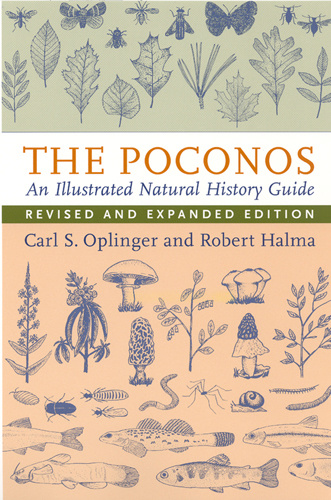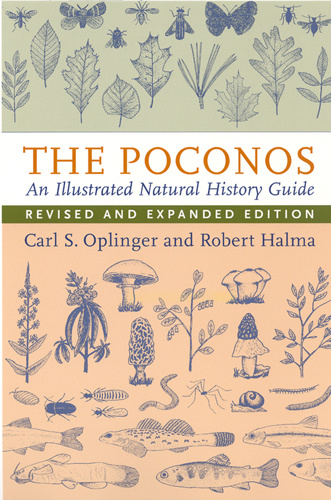The Poconos
An Illustrated Natural History Guide
The Poconos, a rich plateau nestled in northeastern Pennsylvania between the Delaware River and the Moosic Mountains, encompass a variety of alluring features. The perfect reference for amateur naturalists, outdoor enthusiasts, tourists, and others who wish to explore the area, this classic guide clearly explains the unique geographic characteristics, animal habits and habitats, climate, geology, and vegetation of the area.
The authors trace the region from its beginnings millions of years ago as part of a shallow sea, through the reshaping forces of great glaciers, to today’s roadways and turnpikes. This revised and expanded edition also includes brief profiles of individuals who played significant roles in the preservation or understanding of the area’s ecology. Chapters provide a general survey of the area, including its history and places to be explored and observed, information on forest types, wildlife, and aquatic habitats, updated facts and figures on animal populations, as well as new details on invasive species.
Throughout the book, numerous boxes direct readers to observatory points for specific birds, ecosystems, vegetation types, and geological features, while maps, tables, original pen-and-ink illustrations, and a select list of field guides and other references enhance the book’s appeal. An indispensable companion for visitors as well as residents, The Poconos is a must-read for everyone who wants to discover or better understand the beauty and natural history of this unique region.
Robert Halma taught botany, ecology, and geology at Cedar Crest College in Allentown, Pennsylvania. Today he is retired as professor emeritus and curator of the college's arboretum.
1. Pocono patterns
2. Geological forces that shaped the Poconos
3. Vegetation of Pocono forests
4. Animals of Pocono forests
5. Watercourse and wetland communities
6. Roadsides, waste places, and invasive species
7. Human activity from Native Americans to vacationers
8. Delaware Water Gap National Recreational Area
Appendix: Nomenclature
Selected readings and source material
Index





